The golden age of Atari: 1978-1981
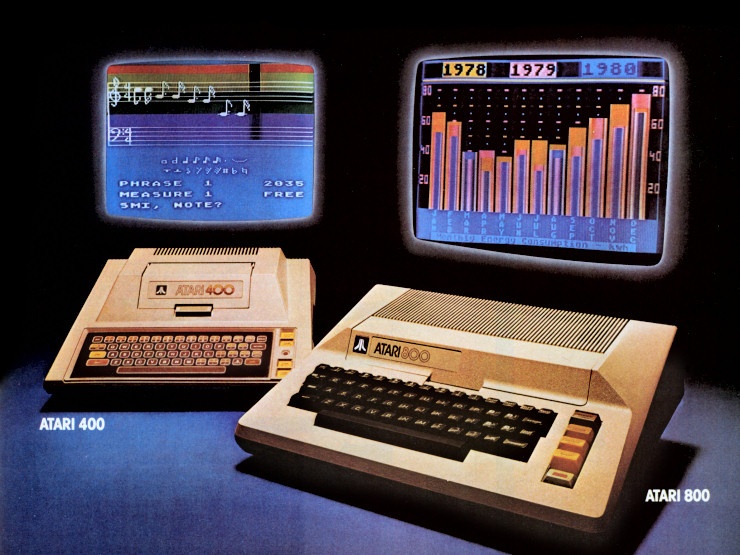
Atari was founded in 1972, but the Atari Video Computer System (or 2600) and Atari 400/800 personal computers became the crowns of its fame in console gaming and computers.
This four-year period - from 1977 to 1981 - includes the most amazing projects in the history of the company: the formation of the 2600, the development of the most popular games ( Centipede , Asteroids ), the creation and release of its first computer platforms.
This retrospective, filled with quotations by creators and other primary sources, contains a detailed study of the company that popularized video games at the turn of the 70s and 80s and created the first viable market for home consoles.
Innovations but the same as last year.
“Someone from Warner said ... that he made a proposal to create a very interesting series of games. I remember how he didn’t blink at me and asked: “Nolan, why don’t you introduce innovations like last year, without all this new?”. He himself did not understand what he was saying and was completely unaware of the essence of innovation. ”
- Nolan Bushnell (Nolan Bushnell)
Innovation at your leisure. This is a concept that Atari, led by Nolan Bushnell, has cultivated throughout her life. Atari engineers invented or competed in the invention of some of the most amazing game projects of the twentieth century.
"These people were my friends and colleagues, and we came together in this work to create something unique."
- Nolan Bushnell
However, inventing ideas is only one part of a successful business. We also need to find customers who are ready to buy them. The objective desire to create interesting projects is almost opposite to the subjective nature of their marketing.
"The marketing department never played games ... they thought that programmers were lazy, and programmers thought marketing was stupid ... they didn't like us, and we didn't like them."
- Rob Fulop (Robot at Atari VCS)
When Atari dealt mainly with slot machines, marketing was not a very important factor. To a small audience who needed to know about their games (game hall owners and distributors), it was quite easy to get through publications in such publications as Replay magazine and Coin Connection, distribution of advertising flyers and at industry shows.
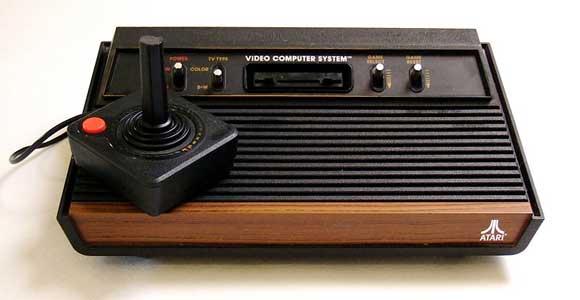
However, in the case of Atari VCS, the company went beyond its old business, and it required more serious marketing than the one that Atari could provide on its own. Warner Communications took up the marketing and investment of large sums needed to implement Atari's ideas.
"Warner invested a lot in the company that helped pay for the marketing and production of games and computers."
- Alan Miller
However, the neighborhood of engineers and marketers Atari almost immediately created a cliché computer era, which is true for many technology companies: engineers and marketers cannot coexist for a long time.
“If someone’s engineers were despised by anyone, it’s the stupid marketers who are demanding the impossible.”
- Nolan Bushnell
Instead of celebrating the successful release of VCS in 1978, Atari mourned the lost opportunities and mistakes that prevented sales. While management was trying to find ways to preserve the business of consumer computers, programmers worked on mastering the new technology, and the research and development department looked to the future.
The eternal struggle of marketing and development, which led to an explosion inside the company and the loss of founders' money, broke out.
1978
In early 1978, Atari had problems on several fronts. Although VCS was selling well at Christmas in 1977 (to 350,000–400,000 cars), sales fell due to manufacturing problems, so VCS consoles didn’t hit retailers lately, resulting in a loss of $ 25 million.
In addition, Atari was burdening warehouses crammed with unsold Pong machines, the stagnation of the slot machine business and the growing gap between the Warner top and Atari leadership.
But even then, Bushnell didn’t lose optimism: VCS was the trump card of Atari. It was necessary to simply find talents capable of creating games for the system.
“I perceived us as the creators of the music player. Creative people had to decide how many records they would release for him. ”
- Nolan Bushnell
In his opinion, if it succeeded, then for the Atari gaming system there would be no obstacles left. The revenue potential of a system such as VCS has become one of Atari's most significant achievements of Bushnell.
"I am proud of the idea of the concept that something worth three dollars can be sold for twenty, or even forty."
- Nolan Bushnell
At the same time, Bushnell began a conflict with Warner Executive Vice President Manny Gerard. After the release of VCS, Bushnell and Joe Keenan disappeared from Atari for a while, but sometimes returned to express their opinions about doing business. This annoyed Gerard.
"You can not disappear for six months, then go back and say:" let's do it like this "."
- Manny Gerard
In addition, Gerard was confident that Atari was spending too much effort on development and research, and not enough on sales and marketing of products.
"They had no sales, no advertising, no marketing, nothing but research and development."
- Manny Gerard
“We had a very powerful development team that worked on many projects. There were more of them than Manny thought. ”
- Nolan Bushnell
In February 1978, Manny Gerard suggested that Bushnell find help in marketing Atari products. Bushnell was not in a hurry to answer, so Gerard suggested running Harvard Ray Kassar, former vice president of marketing for Burlington. Cassar was the complete opposite of Bushnell: a discreet, conservative businessman. Cassar began working as a consultant. Warner instructed him to find out what should be completely discarded in Atari. What he found was not encouraging.
"It was a disaster."
- Ray Cassar
However, Kassar was impressed with the only thing in Atari: VCS. Instead of recommending Warner to liquidate the company, he began developing a marketing plan that would save Atari.
At the same time, Bushnell and President Joe Keenan fought to stay in the company they founded. Instead of leading Atari in new directions and developing business, Bushnell constantly clashed with Manny Gerard and Ray Cassar about the future of Atari products and especially the R & D department.
“We were mad when Manny began killing research projects. I thought he was creating a very fragile company. ”
- Nolan Bushnell
1978: VCS stagnation
The VCS group was founded in 1978 by a team of about 12 programmers, many of whom were newbies, including David Crane, Jim Huether and Warren Robinett. They created a department of consumer equipment so that it could work with pleasure.
“We were very interested. Warner had owned the department for some time, but Bushnell still managed it. He is an engineer, and managed the company as an engineer could manage. Therefore, Warner bought it. But he still kept the development department. He said: “Guys, work, have fun. Someday I will come back and we will talk "."
- David Crane
"It all started with Nolan Bushnell, he was the founder, and he tried to keep the company feeling like a family with Fridays parties ... but you had to do your job, otherwise you wouldn’t have been there for a long time."
- Jim Hyuter
“It was a great job. It’s as if I died and went to heaven. ”
- Warren Robinett
A lot of pressure was put on the consumer equipment department, it had to release new games and bring them to the market in order to support the platform. Although the atmosphere was familiar, the company was on the verge.
“The guys in the development team worked like damned. The atmosphere was relaxed, and in the development group nobody cared what kind of clothes you were wearing. The result was important. ”
- Alan Miller
"(It was) a medium with a weak discipline, but with clearly defined goals."
- Nolan Bushnell
Creating VCS games from start to finish took about six months, and each programmer basically worked on his project.
"When I started work, they told me:" We need you to finish the game in about six months ... the dates are not clearly set, they may not even appear here until the game is ready "... It was great."
- Jim Hyuter
Since programming for VCS was difficult, only those who were committed to their project succeeded.
“I think that in the early years Atari was a success, because games were made by programmers with love. At least in my case, that was exactly the case. In those days, each game for the 2600 was completely created by one person who invented the concept, wrote the program and drew the graphics. ”
- Warren Robinett
The enthusiasm of the team of programmers led to the release of a large number of games in 1978 (there were a total of eleven), even though the games themselves were not crazy hits.
Since most of the games released with the VCS console were replicas of the original Atari games with automata, the second wave of games suffered from comparisons with previous products. Although in the second wave there was still a couple of games transferred from slot machines, many games were based on traditional games, and not on their counterparts from slot machines.

Space War, written by Ian Shepherd and released in May, was a version of the original Computer Space with automatons. However, the button control of the arcade version could not be transferred to the VCS console qualitatively.
“The game is out of control. Joystick movements are slow and clumsy, they will annoy experienced players. ”
- The Book Of Atari Software, 1983
Hangman (the game "Hangman") was also released in May. The game, written by Alan Miller, was remarkable in that it required more ROM for data storage than any other previous cartridge.
“My Hangman game was the first 4-kilo byte VCS cartridge, but the extra space in the cartridge was used only to store words. I was the first to use this part, so I had to make sure that the Synertec ROM manufacturer met the deadline and met the VCS requirements. ”
- Alan Miller
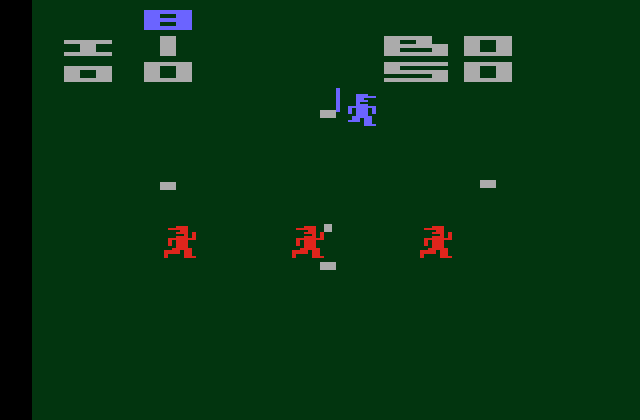
Home run
Home Run , released in June 1978, was one of the first versions of baseball for home systems. A simplified version of this sport, written by Bob Whitehead and David Rolfe, has become for almost five years the only single-player version of baseball for home video game systems.
“The baseball program needed to be stuck in two kilobytes of memory, so the developers had to trim many elements of a real sports game. Many moments of Home Run would greatly surprise real baseball players. ”
- Ernie Katz (Arnie Katz) and Bill Kenkel (Bill Kunkel)
Codebreaker , also released in June, was a version of the classic Mastermind game.
and logic game Nim. Hunt & Score , written by Alan Miller, was another attempt to transfer the traditional game to VCS.

Hunt & score
“The game I wrote for the Atari VCS was called Hunt & Score . Later it was sold under the name A Game of Concentration . In the early days, VCS Atari often changed the names of cartridges for games sold under the Sears Tele-Games brand. Hunt & Score was called Sears Memory Match .
- Alan Miller
Slot Racers , written by Warren Robinett, was released in July. On paper, the game looked great: “A pair of experienced drivers with the instinct of murder are chasing the streets of the city, shooting at each other from the cannons on the hood . ” However, the implementation was far from perfect. The cars resembled boots, and the “city” was not much more complicated than the maze in the Tanks variation called Combat! VCS owners have already played for free.
"In a normal situation, it would never have been published, but Atari needed a product and it published everything that was released in 1978."
- Warren Robinett
Brain Games was released in August and written by Larry Kaplan. It had six different logic games, including a remake of the Touch Me games with arcade machines for VCS. The implementation was good, but the theme itself could not make the game a hit. Polo was developed by Carol Shaw as a mutual ad with Ralph Lauren (which was also owned by Warner Communications). She was like a football with horses for two players. The game was over, but it was never released.
However, among the failures, almost hits and unreleased pearls of 1978, there were several classic VCS games that showed that the system is promising. Outlaw , written by David Crain, was more like Gunfight! Midway's company, than the own arcade game Outlaw Atari.
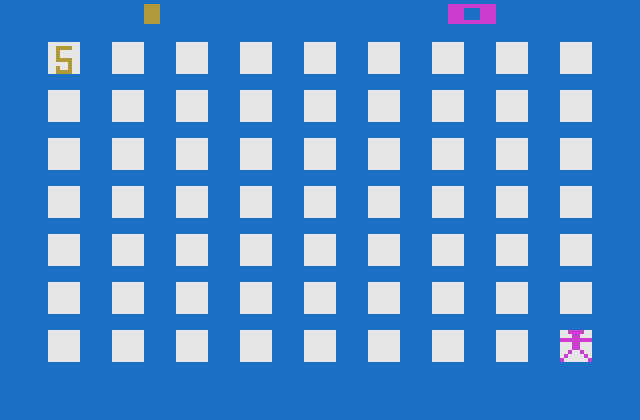
Flag capture
Flag Capture was written by Jim Hüther and released in August. Unlike almost all products for VCS, it was an exciting game in a strategic style. The task of the player was to find his flag on the grid of squares, overtaking the enemy. Each time he clicked on a square, he gave a hint about where the flag might be.
“It was the first game I wrote for the 2600, so she taught me a lot. It was difficult to write a game in two kilobytes of ROM, 128 bytes of RAM, including the stack, and write to the screen on the fly. I wanted to create something like Stratego, but I realized that I could not do it on one screen. Therefore, I decided to make a game about capturing the flag. The work took about six months. The graphics were pretty bad, but the gameplay is very interesting. ”
- Jim Hyuter
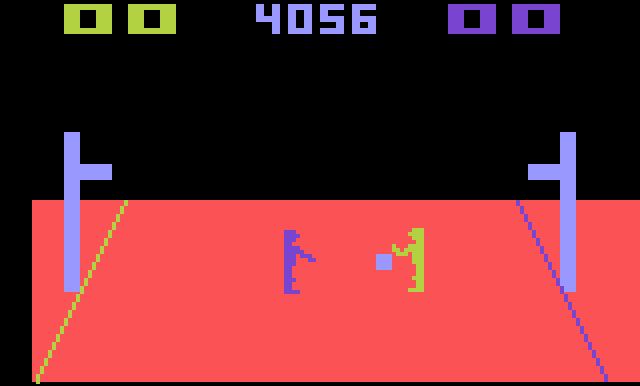
Basketball
Basketball , written by Alan Miller (he himself played basketball) and released in December, was a pretty big breakthrough: the game had a pseudo three-dimensional field and a hurricane gameplay for two players, even though the ball was square, and the players looked a little silly.

Breakout
However, there was one game for VCS, which stood out among all the rest: Breakout . Released in November, right before Christmas, Breakout was actually a complete portrayal of the popular 1976 Atari game from arcade machines. Brad Stewart won the right to program this game, beating programmer Ian Shepherd in its arcade version in the Atari lounge.
“At that time, another programmer, Ian Shepherd, was also free. Since Breakout was one of the games that we were going to do, and the Breakout machine was in the lounge , Ian and I decided to play the right to code this project. I don’t remember which of us started first, but I managed to break both walls of bricks with one ball, and the game went into an endless cycle: the ball hit the same fixed platform place, again and again doing the same way. When the turn came to Ian, he lost, so I got the right to encode. ”
- Brad Stewart
The aggressive marketing plan of Ray Cassar gave its results in the fourth quarter of 1978, when Atari ads with slogans began to appear on TV screens across America (“Do not look, but play”).
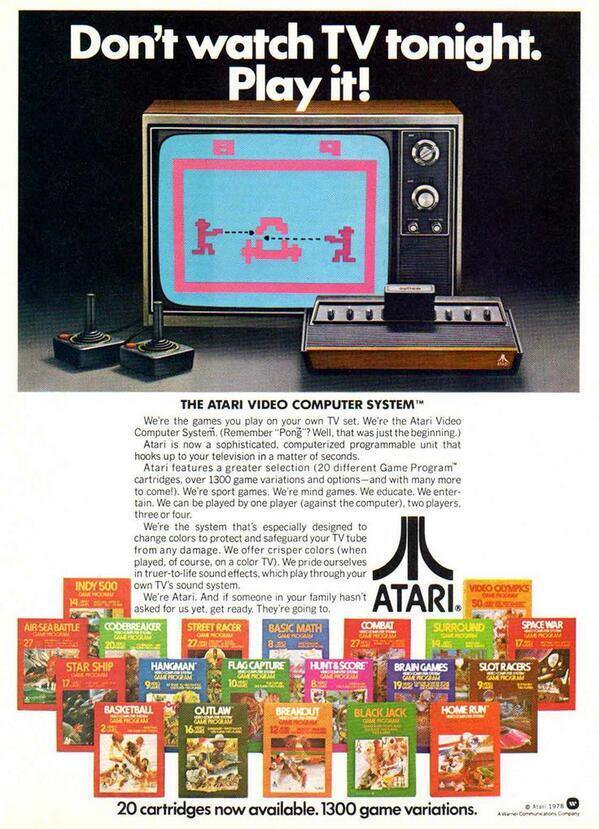
People saw not only that Atari VCS could stand at their home - real celebrities on the screens (Don Notts, Pete Rose and Karim Abdul-Jabbar) advertised games for VCS ( Breakout!, Home Run and Basketball ). Cassar spent in 1978 on advertising five million dollars.
Cassar also insisted on creating a technical support program that would reassure nerve retailers who are concerned about the return of faulty games. He took advantage of his own vast experience to increase the production of VCS consoles around Christmas 1978.
However, the growth of VCS production before Christmas was influenced not only by Kassar. Nolan Bushnell used all the opportunities so that his staff had time to finish and release their products. Bushnell stimulated all managers, managers and other corporate employees on a salary to help carry out all orders. Most of them worked every day for four to eight hours on top of their work schedule.
Another good news for Atari was that the Bushnell strategy of tying semiconductor manufacturers to Atari was a success: for the whole of 1978, VCS did not have a single major competitor, and Atari approached the Christmas season, with 800,000 ready-to-sell consoles in stock.
1978: VCS followers: Colleen and Candy
When in 1977, work began on a follower of VCS. Joe Decuir,
Jay Miner and Steve Mayer, from the development team, were tasked with creating a machine that would succeed VCS and double sales in the booming personal computer market.
"(The Successor) was supposed to support the old arcade games of 1978. We knew that we had to surpass 2600 until no one else did. (We also needed) to provide support for symbolic and raster graphics. We watched the output of Apple II home machines. Commodore and Radio Shack ".
- Joe Dekir
The project was soon divided into two separate projects, Colleen and Candy, named after the two most beautiful secretaries. These products were later renamed Atari 800 and 400. Colleen was supposed to be a full-featured computer, and Candy was more suited to the role of a home gaming machine, the successor to the 2600.
Both computers were built on the same basic hardware scheme from four separate silicon chips that control various computer functions: a 6502 CPU with a frequency of 1.8 MHz, an ANTIC display microprocessor, a CTIA graphics chip, and a POKEY sound chip. The power of these processors greatly expanded the capabilities of 8-bit computers as compared to VCS.
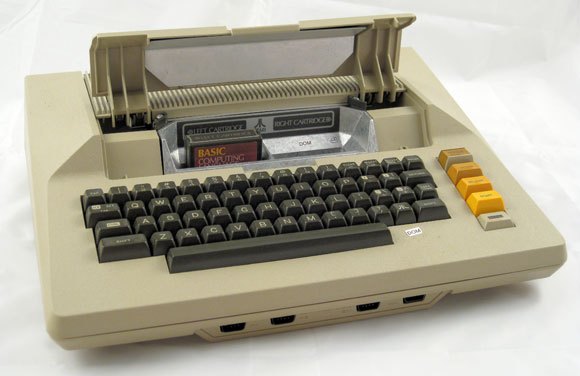
Jay Miner, as the architect of the system, managed the group that included Joe Dekira, George McCloud and Francois Michel. They developed an ANTIC microprocessor for processing display information and a CTIA graphics chip for displaying it on the screen.
It was a very powerful combination that provided Colleen and Candy with the most complex graphics of all microcomputers of the time. ANTIC received graphic information in the form of display lists (Display Lists). The interruptions of the display lists made it possible to cut the screen horizontally into several parts, which provided almost unlimited graphic possibilities.
These commands were processed and displayed in one of several graphics modes by a CTIA processor (later GTIA). The architecture also had hardware support for sprites (“Player and Missile Graphics”, Player-Missile Graphics) for creating games, a set of characters that could be completely redefined in code, and a progressive string scrolling.
Compared with the graphics capabilities, the TIA chip of the VCS console looked very primitive.
The fourth after 6502, ANTIC and CTIA in architecture became the POKEY chip. POKEY was a specialized sound processor developed by the core team, and completed by Doug Neubauer.

"The Atari 800 architecture evolved as an extension of the 2600. Originally conceived by Steve Meier, Joe DeKir and Jay Miner, even before my arrival at Atari, the original POKEY chip design handled the keyboard interface, sound and controllers."
- Doug Neubauer
The chip had four audio channels, for each of which it was possible to change the volume, frequency and waveform. This gave Colleen and Candy sound great advantages over the squeak of the speakers of other personal computers of the time.
While the development of equipment was being completed, Atari began working on the software necessary for the operation of computers. After the announcement at the end of 1978 that computers would be exhibited at the January 1979 CES, the main task was to write software for managing computers.
“Atari has been developing a personal computer for a couple of years, and it had a group of programmers who had been working on the OS for a long time. Then Atari said that the computer will debut at CES in January 1979. "
- Alan Miller
In order to be in time for this date, Atari transferred some of the best programmers from the VCS team: Alan Miller, Larry Kaplan, Bob Whitehead and David Crane to work on the operating system, and work on creating a version of the BASIC language for computers for outsourcing.
“Atari Atari Larry Kaplan, Alan Miller, Bob Whitehead, and I myself did not release games. We were the most experienced Atari developers, so we were assigned to create an OS for 800. This group and two others wrote the entire operating system in about eight months. Al Miller likes to tell a funny story from that time about the Atari BASIC cartridge , which was supposed to be sold along with the computer. Atari signed a contract with a young programmer Bill Gates to change the BASIC compiler for another system he owned so that it could be used in 800. After this project did not move for more than a year, Alu was assigned to replace it with another developer. That is, Al became the only person who happened to sack Bill Gates. I suspect that instead of working onAtari BASIC , Gates devoted his time to creating DOS for IBM. Probably not the worst career choice for him, do you think? ”
- David Crane
BASIC Language was completed by SMI on time, as was the Atari OS.
“I am very proud of the OS we created for the Atari 400/800. In terms of complexity, it was similar to QDOS (OS, which Microsoft licensed a couple of years later from Seattle Computer Products and renamed MS-DOS for IBM personal computers). However, Atari OS had a much more user-friendly design, its graphics subsystem was much better, and there were much fewer errors in it. ”
- Alan Miller
1978: bisnes arcade machine
At the beginning of 1978, Atari arcade machines still competed with microprocessor technologies, which at that time were used in most games, stimulating progress in games and slot machines.
By that time, the arcade group was divided into four main teams (which included fresh talents like Mike Albaugh and Ed Logg
). Each team consisted of a leader (usually an experienced electronics engineer), a pair of programmers, a pair of electronics engineers, and a pair of technicians.
In contrast to the individual development of games for VCS, operations with arcade machines were a team work. As before, the emphasis was on technology, because the graphics capabilities of the equipment remained fairly primitive.
“Graphic and hardware architecture was a“ common resource ”, and“ graphics ”was physical physics, not pixels. The teams created their own pixels, which at that time we called points, none of us learned computer graphics. ”
- Mike Elbo
1978 began for Atari with the Sky Raider plane shooter released in March. Continuing the still current “military” theme of previous games, Sky Raider allowed the player to fly over a scrolling landscape, throwing bombs at enemy targets. It was one of the first games that kept the table of records (so far without player initials).
"Sky Raider was an exciting game ... it was first shown on the ATE show in London , and the reaction to it was very positive."
- Frank Ballouz, Atari Marketing Specialist
One of the first Atari arcade machines in 1978 was Avalanche , programmed by Dennis Koble and released in April. Avalanche was " Breakout the opposite": stones that the player had to collect fell on top of the screen.
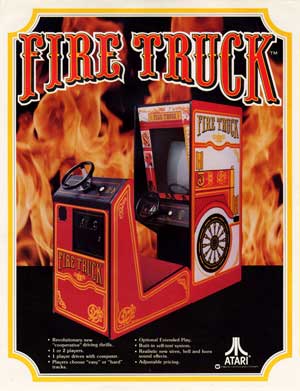
A little later, in June, Atari launched the Fire Truck . Fire Truck became one of the first cooperative multiplayer machines. One or two players drove a fire truck driving through the city with a hook and a ladder.
The slot machine consisted of a seat with a steering wheel for the driver and a platform behind the seat and another steering wheel, which the second player controlled the fire truck ladder.
" Fire Truck was a follower of Superbug . The idea was to create a joint driving game for two players. In Fire Truck, one player drove the front of the car and the second behind the car. It was harder than it seemed."
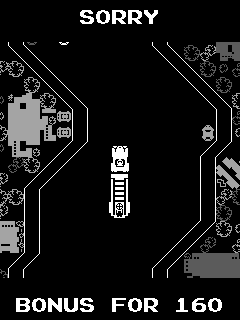
The single-player version of this game called Smokey Joe was released in August 1978 and was intended for halls that did not have enough space for the massive Fire Truck machines .
In July 1978, saw the light of Skydiverwritten by Owen R. Rubin. The player jumped from an airplane and ran his character to get to a certain place on earth.
Rubin was a fan of pinball and added a “pinball chip” to the game: with a successful landing, the name of the game caught fire on the screen. If the player managed to ignite the full name, but he won an extra life, points or a free game. Rubin had to contend with his bosses in order to bring this feature into play.
“I'm a fan of pinball, so this was the first video game in which this pinball feature appeared. When I asked whether it was possible to add it, I had to convince and argue, because the leadership thought it was insane. ”
- Owen Rubin
When Ed Logg came to Atari in 1978, he immediately began working with Atari engineer Dennis Coble on the failed and unreleased Dirt Bike machine gun . When this project was "stabbed", he took up Super Breakout, a continuation of the 1976 hit Atari Breakout . Released in August, Super Breakout was a pretty big hit, sold in quantities of 5,000 units.
The game improved Breakout in many aspects : instead of discrete logic, it was written for a microprocessor (6502) and included three variations of the game - Double Breakout (two walls separated by space), Progressive (endless walls scrolling down the screen) and Cavity (two ball in standard walls).
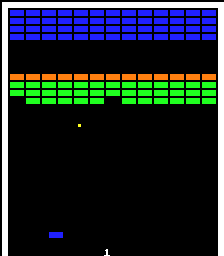
Super Breakout
“Initially, we wanted to make six variations of Breakout ... But in fact, it turned out that there is only one favorite - Progressive Breakout. As a result, we made only three variations: Progressive, Double and Cavity Breakout . ”
- Ed Logg
In 1978, they also released Sprint 1 , a single-player version of the game Sprint 2 related to Atari by Kee, Ultra Tank , a version of Tank , inspired by Combat Atari VCS, with eight variations of the game and Orbit , a raster version of Space War , developed for the European market Owen Rubin in six to eight weeks.
In addition, in 1978 there were several notable unreleased games, many of which continued military topics. Including Wolf Pack ,PT Commander , Captain Seahawk , as well as non-military Mini Golf .

Tunnel Hunt
One of the interesting unreleased games of the year was Tunnel Hunt , written by Owen Rubin. Tunnel Hunt is a pseudo three-dimensional shooter that was not entertaining enough for release. The game was later sold to Exidy as Vertigo , and then Centuri as Tube Chase .
“Marketers believed that just flying would not be enough, so we added objects like in Star Wars that flew up to the ship and needed to be shot. It was a good game, but they continued to demand changes. In tests for twelve weeks, it was consistently in second or third place, but Atari could not decide on its release. "
- Owen Rubin
The most important arcade game for Atari in 1978 was Football . Football was a big hit at its launch in October, in time for the NFL season.

Football
“When I came to Atari, some guys have long wanted to make a game about American football. It seems that this idea was mainly promoted by Steve Bristow and Lyle Rains, but the technology was not entirely suitable for her. In the transition to games on microprocessors, it seemed possible. "
- Mike Elbo.
An innovative controller system called Trak-Ball (registered as a trademark in October 1977) was used to control the game. Rotating the ball faster or slower in any direction, it was possible with the help of the Trak-Ball controller to control the direction and speed of the screen players - "crosses" and "zeros".
“When we brainstormed on management, I wanted to use a trackball. They already existed, but were incredibly expensive. I got one of our design engineers, Jerry Lichac, with a lot of ill-conceived designs. Meanwhile, Sega has released a game about European football with a trackball. The design was not very perfect, but served to guide Atari proof of the possibility of its use. Before that, they argued that the trackball would be too expensive. Jerry brilliantly coped with the work. His "three-point pendant", the use of which I first saw in such a context, soon began to be used in almost all mechanical mice. It is a pity that we have not patented it. ”
- Mike Elbo
In just a few months, as many as 10,450 Football slots have been sold.. At the same time, America (and the world) was shaken by the Taito's Space Invaders submachine gun , returning thousands of people to the gaming halls. Football benefited from this influence, and competed with Space Invaders the entire end of 1978. However, after the end of the NFL season, sales dropped significantly. By the beginning of 1979, Atari was selling automatics at an insignificant price of $ 395.
According to the 1979 tax reports, the Atari slot machine department provided only $ 52 million in sales, compared with 200 million units of consumer equipment. It was obvious that the arcade would not be a priority for Atari. However, this department did not miss the success of Space Invaders and quickly began to create space games to compete in the new market.
1978: Atari Electronics Pinball
The Atari pinball department continued to release games throughout 1978. The first was the Middle Earth released in February . It had a double field with flipper sets and the “Lord of the Rings” theme. Also in 1978, the largest pinball machine in history (210 cm x 99 cm x 236 cm) Hercules (April 1978) and Space Riders (November 1978) were released.
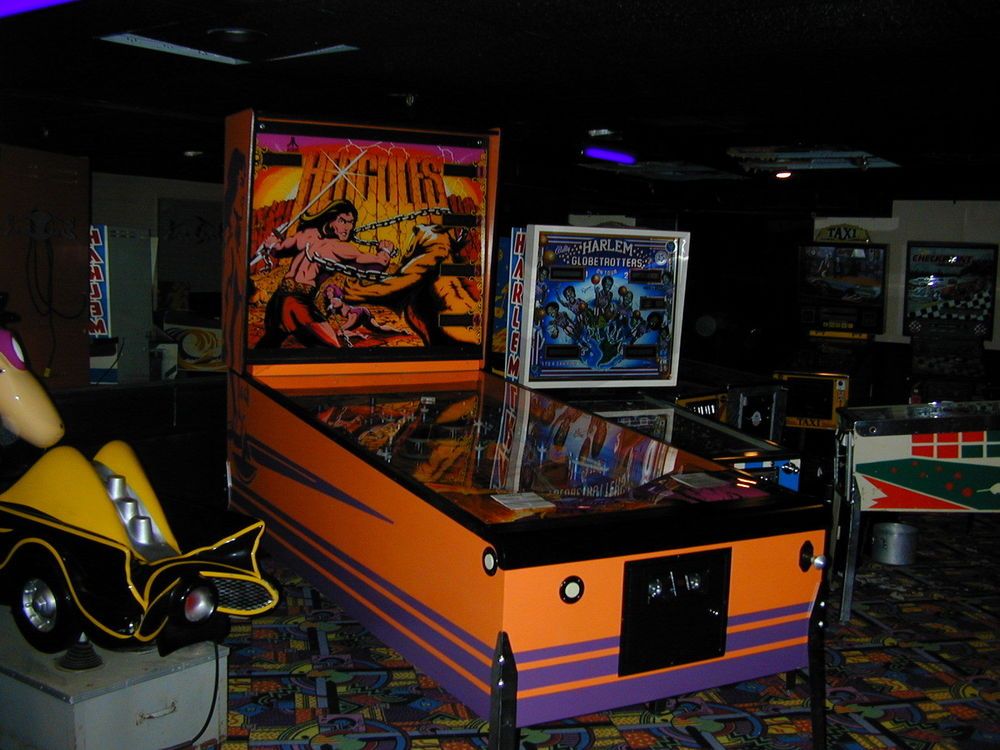
At the same time, Atari Electronics released its first Touch-Me product , which was a version of the arcade game with the same name.
"(I did) a small product called Touch-Me, which was a compact version of Milton Bradley's Simon game with an Atari Touch-Me arcade machine ."
- Dennis Coble
Touch-Me did not have much success, and the electronics department never released new products. In 1978, three other products were released, but they were not sold: the compact versions of Space Invaders and Breakout , and Pro Coach Football .
1978: Bushnell leaves
During 1978, Ray Cassar became not just an Atari consultant, but moved to a more significant position. The importance of Ray grew, as did the confidence in his skills at the top of Warner and such leaders as Manny Gerard. Therefore, Nolana Bushnell and Joe Keenan were systematically pushed out of the company.
"By the time I came to Atari (in the summer of 1978), Nolan was gradually replaced by Ray Cassar."
- Rob Fulop
Bushnell constantly fought Warner Communications and Cassar for leadership over Atari. By the end of 1978, Bushnell admitted that Atari was making big mistakes. He felt that VCS had problems, and it had to be replaced by a successor.
“On the day of the release of the 2600, I felt that I needed to spend the development fund on a new model. By the time the technology was released, they had gone so far ahead that we could have created a much better video console. Warner was horrified by this idea. They wanted to be a record business, and sell records forever. I told them: “It will not work this way, every two or three years you need to update the equipment,” and it was their decision not to update the hardware that led to the catastrophe in 1982 ”.
- Nolan Bushnell
In addition, he felt that the nascent Atari line of computers should attract third-party developers, but the leaders of Warner's record company, who were used to controlling intellectual property and media, wanted to make computers completely hidden from outsiders.
“I felt that the computer system should not be closed, we need third-party software developers. I saw how Steve Jobs acted as an evangelist, and Atari said that if someone releases software for her computers, she will sue him. I thought it was irresponsible. The manual came from the world of sound recordings, in which companies protect their property in court. ”
- Nolan Bushnell
Bushnell continued to fight Warner to save the research and development department, especially to implement his plan to link all N-Channel chip manufacturers to Atari so that none of the competitors could produce their product. In addition, they argued about the high prices that Atari had charged for pinball machines.
History has shown that Bushnell was right in everything except the fate of the VCS, and this was the Achilles heel of his leadership. In November 1978, Bushnell outlined his views on the fate of VCS at a meeting at the Warner office in New York. Atari produced 800,000 consoles by 1978, but many remained unsold. For all involved, including Bushnell and Manny Gerard, the situation was desperate.
“Warner’s annual budget meeting took place in November. She proved the collapse of Bushnell. Bushnell and Gerard fought in front of a crowd of high-ranking officials, and the squabble continued for several hours. ”
- Steve Bloom (Steve Bloom)
They argued about their catastrophic failures, especially the still low sales of VCS.
“For the company, it was a very bad year. It was obvious that we made too many consoles, which turned into a potential disaster. We talked about the fact that the company had 40 million dollars worth of equipment. ”
- Joe Keenan
Bushnell admitted that VCS had a terrible Christmas season. Gerard was confident that Cassar’s marketing plans would show good results. The meeting turned into a complete disaster, and all those present knew that some changes were needed.
Bushnell could have been saved by his prediction of the terrible sales of VCS if it were fulfilled. However, this did not happen.The success of Space Invaders on arcade machines and the unprecedented advertising campaign of Kassar on TV in the fourth quarter of 1978 brought solid sales on Christmas of this year and 200 million profits to the consumer equipment department in 1978-1979. But Bushnell was also an important part of this success.
“Don't forget, I also hired Ray (Cassar). If, according to Warner, there were problems with marketing, then I decided to them by hiring Ray. ”
- Nolan Bushnell
However, this prediction of VCS failure was the end for Bushnell. Manny Gerard proposed a reorganization that would keep Atari’s director’s place behind Bushnell, but Nolan realized that he could no longer manage his own company.
"I understood that, whatever my position, real instructions would come from New York ."
- Nolan Bushnell
Therefore, Bushnell told Gerard that he wanted to be fired (Warner insists that she did not dismiss Bushnell, but the result was the same), and thus end his post as the first video game engineer in the world's first video game company.
Bushnell signed a seven-year commitment not to compete, agreed to purchase rights to his former company’s Chuck E Cheese Pizza Time Theater (for $ 500,000), and then sent it off to conquer the world in other areas.
« . Warner, , , Atari ».
—
1979:
1979 began as the first full year in which Atari did not control Nolan Bushnell. The new president and CEO Ray Cassar very quickly began changing orders in the company. The first thing that Cassar did was that he canceled many engineering projects that he considered unnecessary.
Unfortunately for Atari, they also included the Bushnell project on the N-Channel binding to limit competitors to VCS. This has opened up to many competitors, including Bally and Mattel, the opportunity to compete with Atari for leadership in the home video game market.
“There were only six laboratories producing N-Channel in the world, and thanks to contracts with them we practically created a monopoly. It was very simple. Ray Cassar was not a techie, so he didn’t understand what was going on. ”
- Nolan Bushnell
At the same time, Cassar took several steps to break the power of the developers over Atari. Together with the abolition of Friday parties, the introduction of a dress code and a fixed work schedule, the installation of security doors, he hired a former secret service agent to head the company's security department. Cassar completely dissolved the research and development department of Bob Brown, consisting of thirty people, creating a vacuum of new products at Atari.
“When Al (Elcorn) told me about what was happening, I did not understand him - I could not imagine that Atari was depriving itself of the future by destroying the research and development department. I have always believed that it was the development focus that made Atari successful. ”
- Bob Brown
Cassar's point of view was simple: why does Atari need research and development if it cannot sell the VCS in the warehouses? This is a logical question, but he showed how little Cassar valued the creativity and avant-garde nature of Atari.
The disgusting attitude of management towards Atari game engineers was demonstrated in the press and in person. Cassar used terms such as "spoiled children" and "prima donnas" in relation to those people who were the company's most valuable resource.
To shift the focus from research and development, Cassar hired a bunch of professional marketers and inflated advertising costs to volumes that Atari had never seen before. A new growth of leaders Atari knew nothing about the games, and in fact, hardly ever played them.
"Ray Cassar could hardly be met in the hall of arcade machines."
- Howard Delman
Bushnell created Atari as a company where creativity and innovation could flourish. Cassar quickly shifted Atari's focus from inventing new ideas to exploiting those she already had.
"It became our almost religious passion, and the more our ardor was, the more interesting games appeared."
- Nolan Bushnell
On the other hand, Warner and Kassar created a company that could bring to the market an existing product line at the cost of everything else.
"They pulled out the very essence of the company, which constituted Atari's uniqueness and magnificence."
- Nolan Bushnell
1979: Atari VCS
At the end of 1978 and the beginning of 1979, the line of VCS games began to improve. Night Driver (Larry Kaplan, Rob Fulop) and Adventure (Warren Robinette) were quite popular. These games were shown at the January CES and received a warm welcome.

Night driver
It was evident that the work of Bushnell in 1978 to strengthen the team of VCS programmers to create as many games as possible bore fruit, at least quantitative. In 1979, many new games were released, while a part of the VCS key programmers (Kaplan, Crane, Miller and Whitehead) worked on the OS for the home computer department.
However, the quality of the games was in question. In addition to the amazing Bowling , Canyon Bomber and Sky Diver cartridges, there was nothing interesting about the line-up: Casino , BASIC Programming , Backgammon , Football , Human Cannonball , Miniature Golf and Slot Machine .
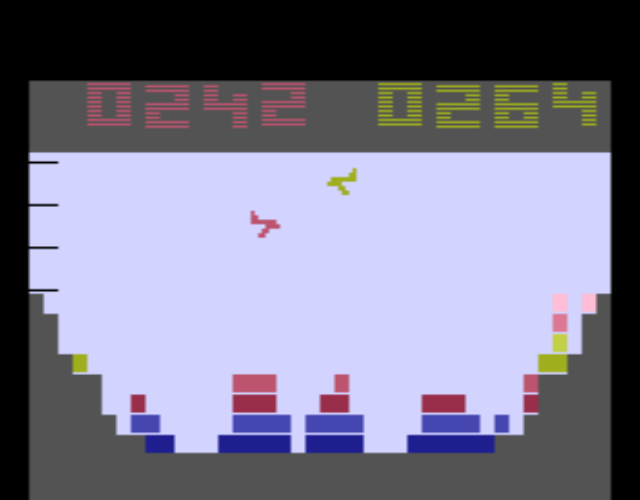
Canyon bomber
"( Sky Diver ), as far as I remember, also took about six months, and I started working without even knowing that there is an Sky Diver arcade machine ... Before the release of Space Invaders, this game was a 2600 bestseller."
- Jim Hyuter
Video Chess was created after a Florida buyer filed a lawsuit against Atari because there was a chess piece on the console box and the game itself was missing. The VCS programmers did not think that chess could be implemented on the VCS, but with the help of tricks with changing the scan lines it was possible to write it.
“I remember talking in the laboratory about how“ stupid ”it was to assume that we can do chess and that it is“ impossible ”. That was what I needed ... it seems that the word "impossible" is one of the incentives for me. It challenges me. ”
- Bob Whitehead
Warren Robinette completed the BASIC Programming cartridge exotic for the VCS line in June 1979.
“Atari’s top management wanted us to have a cartridge that teaches the user how to program easily, and I expressed an interest in creating a programming language before such an idea came to my head. I was the only 2600 computer programmer who studied computer science. ”
- Warren Robinett
Another remarkable game in 1979 was Superman , the first home video game licensed by film franchise. Ray Kassar needed to find a VCS programmer to create a game based on the film released in late 1978. Warren Robinette has been developing a text-based game for the mainstream Adventure game since mid-1978.
“I was finishing my first video game for the Atari 2600 console. I had the opportunity to play the original text adventure game in the Stanford research lab. She was called Adventure . (Thank you, Don Woods and Willie Crowther.) I decided that this idea of traveling through a network of rooms with movable objects, obstacles and monsters might be suitable for a video game. ”
- Warren Robinett
However, instead of creating a regular adventure game, the new elite Atari asked Robinetta to rewrite the project and link it to the film Superman (released in December 1978).
“Atari's parent company owned the first Superman movie, which was soon to be released. [Therefore decided] that I should replace Adventure with Superman in order to take advantage of the hype. Every time I talked about this, I said that I would do the work, but I didn’t want it. A few weeks later, my colleague John Dunn (John Dunn) voluntarily took my code and created the game Superman , allowing me to finish Adventure . ”
- Warren Robinett
Robinette helped Dunn get started by sharing the core of the Adventure code. Dunn was an artist at heart, and insisted on using 4 KB of ROM (which was unheard of at the time) to make the game more detailed graphics.
But despite this, the game still became a “forced march”, which the VCS team had never done before. Instead of doing their own games for six months, the team had to obey the marketing department, who dictated which games to play and which ones would be released. The process of creating the game killed in Dunn any enthusiasm for working in Atari.
“Before Warner bought Atari from Nolan Bushnell, VCS programmers were free to develop their games, from concept to completion. It was a busy, creative period that ended with the Atari acquisition. ”
- John Dunn

The game Superman was released in mid-1979. She overtook Adventure , completed by the Christmas of the same year. But despite this, Adventure has become a big hit. Perhaps sales have fueled the addition of the first ever Easter egg video game.
Atari was not eager to tell the public the names of game developers, so Warren Robinette put his name into the game and created a clever way to get to him with an invisible point and a secret room.
“All games for the 2600 were fully developed by one person. But on the packaging they always wrote only „ Adventure, by Atari“. And we worked only for wages, not receiving a percentage of the huge profits. It was my signature, which artist puts the bottom of the picture. But in order to do this, I had to hide the signature in the code, in a very confusing part, and not tell anyone about it. ”
- Warren Robinett
Shortly after the release of Adventure, Warren Robinette left Atari, and the Atari leadership found out about the Easter egg.
“I created a secret room the way the secret messages were made in Beatles records (“ I buried Paul ”) in the late sixties, when in order to hear the message, you had to play the recording in reverse ... Atari made several hundred thousand Adventure cartridges and sent them to stores the world. And, of course, some children found this secret room. ”
- Warren Robinett
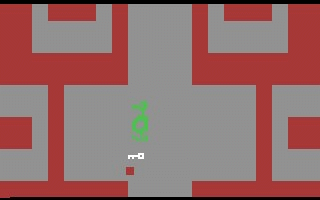
Adventure
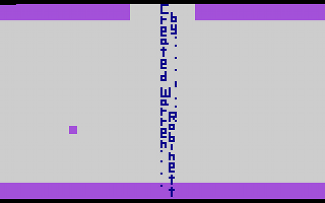
The first in the world "Easter eggs"
At first, management wanted to remove it, but soon realized that the “hidden secrets” would allow to sell more games. A total of one million Adventure cartridges were sold.
“Finding this point and the secret room was one of my first memories of video games. I read about Easter eggs in Atari Age magazine, and spent hours trying to find it. When I saw this secret room for the first time, it was like magic. ”
- Anonymous Atari fan
Although Atari eventually approved the idea of the “Easter egg”, the management still did not understand why it was hidden in the game. The programming team was unhappy, and with that it was necessary to do something.
“None of us liked the changes made by Warner. We felt that they do not understand that game programmers are creators, not technicians, and they should be treated accordingly. ”
- John Dunn
The most obvious manifestation of this dissatisfaction among programmers was the "fantastic four", a group of four of the most long-standing and experienced VCS programmers: David Crain, Bob Whitehead, Larry Kaplan and Alan Miller. These four were the most experienced and knowledgeable programmers from the VCS staff.
The name of this group had a reason: the result of their labor became the majority of cartridges sold for VCS by 1979.
"At the time, David, Bob, Larry, and I made more than two-thirds of Atari's cartridge sales."
- Alan Miller
Most of these programmers were transferred from the middle of 1978 to 1979 to create an operating system for the Atari 8-bit computer line. However, as the most experienced members of the VCS team, they felt they had to protect the rest of the programmers. In mid-1979, the morale of the VCS department was very low.
Salaries were low, especially compared to other positions in Silicon Valley. In addition, game designers and programmers wanted recognition and share in the profits from the games they create. Bushnell treated programmers like rock stars and created an environment in which they could shine.
"Over time, it became obvious that they were rock stars, people of outstanding talent, deserving to earn huge money."
- Nolan Bushnell
The new Atari leadership did not value them so much. The Fantastic Four set out their problems and needs for writing and passed them on to Ray Kassar. Their requests were not ridiculous, they were based on working conditions in the recording industry, which was well known to Warner Communications.
“I studied the terms of remuneration in the recording and book industries, created a draft contract that would allow me to put my name in the works and get a very fair share of the profits, and handed it to Atari. After some time, I told my closest Atari colleagues — David Crane, Bob Whitehead, and Larry Kaplan — about what I had done. They joined me in these discussions. We had a feeling that Atari was going to agree on a plan for our proposals. ”
- Alan Miller
However, Kassar’s response destroyed their hopes.
“They wrote a letter to Ray Kassar:“ give us a share, a fair share “... they wanted to create a program of fees, or something like that. Ray completely denied them everything, adding the phrase: “you are just the designers of towels, you can hire a dozen of them for a quarter”.
- Rob Zdybel
One by one, the four left Atari, choosing their own path ... but soon they were united again.
“I too often spoke the truth and in August 1979 I had to leave.”
- Larry Kaplan
This did not upset anyone in the marketing department because they did not quite understand what the development team was doing and what the development of the game for VCS cost. They really believed that engineers could be bought in a dozen for a quarter. However, according to Bushnell, "their value to the company was such that other companies could appreciate it."
The four had a plan. They decided to collect investments to create their own company. On October 1, 1979, David Crane, Alan Miller, Larry Kaplan, and Bob Whitehead teamed up with Jim Levy, establishing Activision. They planned to create games for the Atari VCS and be a direct competitor to Atari. It was a bold move that forever changed the business of home video games.
1979: pinball
The Atari pinball machine division, which was in a difficult position, began 1979 with the release in January of Hercules , the largest pinball machine in history. He was more than two meters in height and almost two and a half in length. Instead of steel balls, balls like billiard ones were used in it.
As you can imagine, although the machine gun was impressive, the game itself was not so interesting.
“ Hercules always intrigued me ... I play it when I go to the Redondo Beach Fun Factory (one of the places where there is still a valid game model). This is an interesting experience, but I would not say that it is very exciting. ”
- Steve Fulton (Atari fan)

The latest official pinball machine Atari became Superman , the release of which was announced in March 1979. The game was very successful, just sold about 3.5 thousand cars.
In fact, Atari simply could not create more machines to meet demand. However, when the license ended, the machine was renamed Solar War and Orion XIV . None of these machines made it to the gaming halls.
“The Atari pinball machines were ruin, but at the same time they became artistic masterpieces. We worked on Superman day and night, seven days a week, and it became a work of art, and then it was simply destroyed. I guess I will never forgive the corporation for this. ”
- Noah Anglin (Noah Anglin), vice president of development Atari
Without Bushnell, who was developing innovations in the field of pinball, this department quickly fell into chaos. Atari simply did not have enough manufacturing experience for the manufacture of high-quality machines.
“Bally could have been done in two weeks, but it took us four months. That is why in 1979 we put an end to a pinball. ”
- Don Osborne
After some time, the department closed down completely. Many automata, including Road Runner , 4x4 , Monza and Neutron Star , have not been released.
1979: the heyday of arcade machines
After the huge success of Space Invaders in 1978, the Atari slot machine department was desperately trying to regain the reputation of the king of arcades. Atari has released several space games in the past, but mostly they followed realistic controls and military endings. However, after the Space Invaders , which literally attacked the territory of Atari, the company had to respond with something special.
Engineers from the Atari office in Grass Valley experimented with the vector image generator because they saw how it was used in the 1977 Space War game by Cinematronics. Atari slot machine engineer Howard Delman was given the task of bringing the prototype from Grass Valley to the finished game.
“The original Atari vector generator architecture was created by a group of Grass Valley. They built a prototype of a system that could display vectors on the display. She was not ready for production, but she clearly demonstrated the viability of the idea. ”
- Howard Delman
Unlike pixel raster graphics, vector images are created by assigning points, which can be connected by solid lines. This gives the game a "frame" look, mainly because it is impossible to fill images with color. However, vectors allow for a sharper image, up to the then unheard of resolution of 1024 x 768.
“Vector graphics, sometimes called XY graphics, were great for video games because they provided very high resolution and very clear images at a time when the size of 200 by 180 pixels was considered“ hi-res ”.”
Atari designed and manufactured its own gaming equipment thanks to the very clever design of Lyle Raines, Howard Delman and other engineers. ”
- Owen Rubin
After developing a working vector generator, it was necessary to create a monitor to display images. Rick Moncrief and Howard Delman joined forces to create a fully working system.
“At the same time, Rick Moncrieff was working on a display. (I don’t know if he started from scratch or was provided with a preliminary design from Grass Valley.) Rick and I worked together because our individual projects had to work in the finished product. ”
- Howard Delman
The equipment was ready for programming in 1978, and the team needed to test the concept of the game. Howard Delman chose Lunar Lander , a mainframe computer game very similar to Computer Space . In Lunar Lander managed the tilt and angle, selecting the desired speed for the landing of the lunar module on the rocky landscape.
“Of course, it was necessary to add a game to the finished product, so I was made the leader of the project of the first vector game Atari. I decided to start with the classic vector game Lunar Lander . Rich Moore wrote software. Over the next year, Rick, Rich, and I developed the game, and the final product was called Lunar Lander . ”
- Howard Delman
Lunar Lander was released in August 1979, and despite the mediocre success (4,830 cars were manufactured and sold for $ 1,695), the game's architecture intrigued other engineers and designers of the slot machine department. Even before the release of Lunar Lander , another vector game was already in development.
“In the process of improving the architecture of equipment and games, other engineers also became interested in them. The team of Lyle Raines, Ed Logg and Steve Callie (Steve Callfee) have been working on the traditional raster game Planet Grab for some time . When Lunar Lander began to take shape in the laboratory, they asked us for the equipment to use in their game, which was released under the name Asteroids.".
- Howard Delman

After the release of the Asteroids machine in November 1979, the owners of the gaming halls were skeptical of him, but he still took the arcades by storm.
At that time, it was the largest sales game for Atari (about 55,000 cars). She drove the Space Invaders out of the minds of fast-growing crowds of players playing the best of space games.
" Asteroids have surpassed Space Invaders . It was then that the business community began to think that perhaps video games were not some dummy."
- Don Osborne
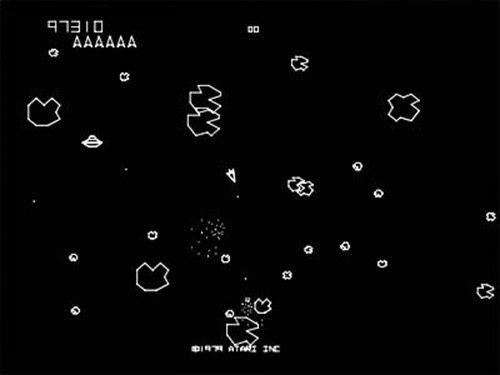
It is interesting to note that, like many other Atari hardware achievements (for example, the use of discrete logic), vector equipment was a step backwards in technology that ensured successful production.
In the case of vector graphics, Howard Delman worked on replacing equipment from digital to analog. He invented the architecture that allowed Atari to become the leader of the golden era of arcade machines.
"The original vector equipment that was used in the Lunar Lander and AsteroidsIt was almost completely digital. It became obvious to me that in a vector generator analog circuits could outperform digital ones in terms of benefits and efficiency. I changed the architecture of a piece of equipment by replacing digital components with analog circuits. Thus was born the analog vector generator. Although the player in the machine would not notice the difference, such a replacement reduced the size of the PCB and reduced its cost. ”
- Howard Delman
In 1979, in addition to vector games, Atari released other arcade machines. In an attempt to use the success of the 1978 Football , Atari created the Atari Sports brand to market their games. Baseball (May 1979) became the first Atari sports game released . It was manufactured and sold 1050 cars for 1595 dollars each.
HaveBaseball was similar to Football machine and control mechanism. For Baseball, we also developed a voice synthesis module, which was abandoned before being released into production.
"The main idea of the game was to use the same equipment and the scheme of the machine, which was used in a very successful game Atari Football... However, we also created a prototype voice system developed by Dan Pliskin. It used delta modulation technology and played a sampled voice, uttering such phrases as “Strike”, “Ball”, “Foul” and “Yer out!” But he did not get to the final product. I think the only prototype of this voice module remained at my house. Although he did not get into production, he was probably the first voice module in an arcade machine. ”
- Ed Rotberg
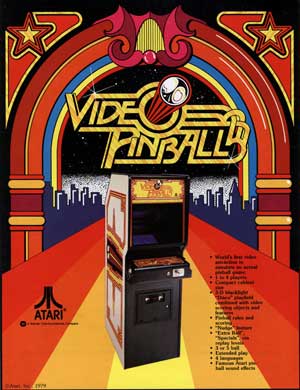
Along with Baseball , Basketball and Soccer (written by Dave Theurer) under the brand Atari Sports in 1979 also produced other games, including Four Player Football(901 guns were manufactured and sold for 1995 dollars each), developed in Grass Valley with the support of Ed Logg.
Rounding out the list of Subs (May) and Video Pinball (March) automata released in 1979 , also programmed by Ed Loggom.
“I didn’t believe that Video Pinball would be successful ... However, there were places for video games that pinball machines couldn’t fall into. As a result, the game earned more than I expected, and had commercial success. ”
- Ed Logg
Not yet released a couple of games of that period, among which was Sebring (a color racing game with an imitation of a first-person view, developed by Owen Rubin and created by Jed Margolin).
The game was completed, but the conflict with the manufacturer of the machine (and, perhaps, the emergence of more modern equipment) did not allow to bring it to sales. The Malibu Grand Prix was also a three-dimensional first-person racing game using vector equipment. She was rejected because of hardware limitations.
However, all this has gone into the shadow of the phenomenal success of Asteroids and the development of Ed Logg as one of the best developers of Atari automata.
“Ed Logg is the world's best game designer. He created the best quality games. ”
- Steve Calfey, Atari slot machine developer
The old reservists of the arcade machines either left Atari (Joe Dekir) or were in a difficult situation (Al Elcorn, Ed Rotenberg), so a new generation was needed, similar to Ed Logg and Dave Terer, capable of leading Atari slot machines in the new decade.
1979: home computers
By the January 1979 CES show, Atari had preliminary prototypes of two new computers: the Atari 400 and Atari 800. Apple II, TRS-80 and Commodore PET were already released, and the potential size of the personal computer market was still unknown, so many Atari doubted in this decision. However, Ray Cassar was adamant: Atari had to get into the computer business as soon as possible.
In a spring letter to employees, Ray Cassar spoke about 400 and 800, and about the market that Atari wanted to enter.
“1979 will be the year of new products. The most ambitious of these products is the new line of Atari 400 and Atari 800 personal computers. Entering this market is a difficult task for all of us. There is a lot of competition, and the quality and performance standards are very high. ”
- Ray Cassar information letter to employees, spring 1979 The
good news was that Jay Miner, Joe Dekir, the Fantastic Four and the rest of the team who developed the Atari computer did an excellent job.
“It is difficult to overestimate the uniqueness of these machines. We took Apple as a basis. Computers had to be able to do everything Apple could and even more. As it turned out, our cars even overtook the time. Atari had no idea what to do with them. ”
- John Anderson (John Anderson)
However, despite the outstanding hardware characteristics, the situation with the software was deplorable. Warner led the music business and viewed computer programs as much as published records and songs: Warner wanted to control everything.
Warner wanted to create all the applications herself and threatened to sue anyone who dares to write software for Atari computers. It was against the rules of the rest of the computer industry. And in the beginning, the position of 400 and 800 was shaky, unlike competitors who had no such restrictions.
“The strategy of Warner Communications was very different from the approach of Steve Jobs. Warner would never have won this battle. I don’t know if I could handle it or not, but I definitely wouldn’t have made Warner mistakes. The main problem was that Apple was not allowed to dominate technology, but a business strategy. Steve was an evangelist for software developers, he called for creating programs for computers. Our video game strategy was to give away hardware and make money from software. This required a quasi-closed system.
Warner , . : , , . , , Apple, Atari. Warner Atari 800, , , … Atari 800 , ».
—
Even after Bushnell left, the remaining team begged Cassar to open a line of Atari computers for independent developers and allow third-party manufacturers to create peripherals for them. For several years, Atari even refused to provide computer owners with documentation about their internal structure.
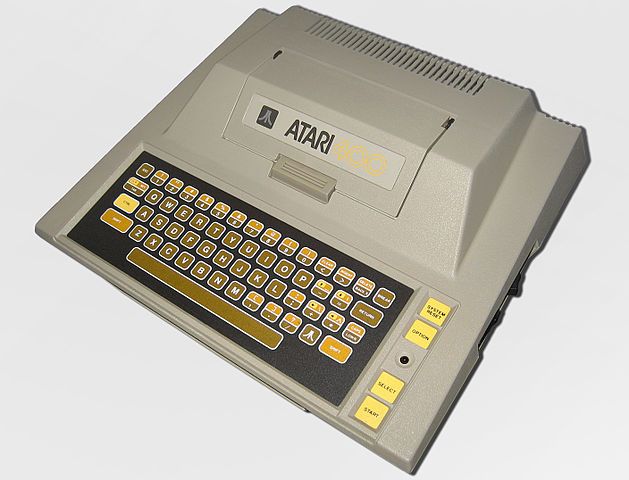
Atari 400
« Atari 400/800 . , , , Atari . , . , Atari . : „, !“»
—
Even with closed hardware, Atari computers had many interesting features. Atari frantically prepared the line for release in November. Part of Atari's strategy was the return of one of the partners who supported it at the beginning of the consumer equipment era: Sears.
To get into the Sears catalog for the 1979 Christmas season, Atari sent manually assembled 400 and 800 models to Sears on August 29, 1979, to be considered “released” by the Sears deadline.
“The first official delivery of the 400/800 took place on August 29, 1979. These were manually assembled machines sent to Sears, which required the availability of the goods by September 1, so that it could be placed in a large autumn catalog. The computers were sent to Sears’s warehouse and then immediately returned to Atari when the “availability” requirement was met.
- Jerry Jessop

Atari planned to create a new market for 400/800, calling them "home computers." She wanted to get rid of the "hacker" associations and make them available to the mass market. This was contrary to the research of that time, who said that the home computer market would mature in a few more years.
« , Atari , , . Atari . , , ».
— (Conrad Jutson), - Atari
“Konrad Jatson was a very intelligent, erudite gentleman. He had twenty years of experience in the consumer electronics industry, mainly in the field of stereo systems. His knowledge of this industry showed a clear understanding of the computer as the main part of a system consisting of components. As it turned out, he and Atari were a little ahead of their time. ”
- Michael Tomczyk (Michael S. Tomczyk)
The first advertisements of Atari computers appeared in magazines like Byte in November 1979 (At that time, Byte described himself as a magazine about "small systems.") The Model 400 had a value of $ 549, 800 was sold for 999 dollars.
However, despite Atari’s attempts to separate computers from the company's popular video games, some of the first reviews still mentioned this connection (although in general they were positive). Atari computers never got rid of this reputation.
“With the advent of the Atari lineup, we saw the third generation of microcomputers, not only in terms of equipment, but also a marketing approach. These computers are a bit cheaper than the previous generation. The main difference lies in the configuration and application for which these systems are designed. A recent article in Computing describes Atari computers as hybrids of a video game console and a microcomputer. ”
- John Victor (John Victor), Compute magazine!
Since the architecture of the machines was closed, Atari had to develop all the games and applications on their own. To this end, the company expanded the staff of application developers throughout 1979. Many VCS programmers were disappointed with their position and saw new perspectives in a more powerful and interesting line of computers.
However, after the departure of the “fantastic four”, the VCS department was not immediately ready to release applications. One of the first programmers to complete this transition was the recently hired designer of military and strategic games named Chris Crawford.
“On September 4, 1979, I began my career as a professional game designer at Atari. The new Atari Home Computer System (HCS) came out two models, 400 and 800, and all game designers wanted to work with these machines. Therefore, the management reported that everyone who wants to work with a home computer must first complete the work on the game console. ”
- Chris Crawford
hired Crawford to create games for VCS, but the first and only Wizard game was never released. According to Crawford, "she didn’t really fit the product line."

Crawford has already developed as a freelancer several computer games for computers IBM 1130, Commodore PET, Tandy and Apple, so it was easy for him to get down to working on software for the Atari 8-bit line of computers.
However, due to the lack of documentation, he and other Atari software programmers had to gather information about the guides of the machine before they started developing work programs.
Even despite the company's desire to develop internally, at first the choice of software for computers was rather poor. There were work packages such as Atari Accountant, BASIC and Atari Word Processor. However, companies were expecting more entertainment programs from industry-leading video games. A modest choice of first gaming applications included Basketball and Chess .
"... the management did not want 800 to be perceived simply as a gaming machine, they wanted to compete with the Apple II."
- Doug Neubauer
1979: the end of the year
Despite the success of Atari in 1979, it was still difficult for the company. VCS sold well, but it still did not have a “killer application” that would make the purchase of the console mandatory. The line of 8-bit computers was released at the very end of the year, so its fate will be known only by the end of 1980.
The arcade department had a loud hit - Asteroids , but its influence can be fully assessed only next year. Atari entered three different markets, and it was difficult for her to win at least one of them.
« Atari, , , . : , , ».
—
, , Atari 1972 , . . 8- .
« ». , Atari , . , .
« , Atari . , , . , , , , „ “ , .
VCS ».
—
[ .]
All Articles